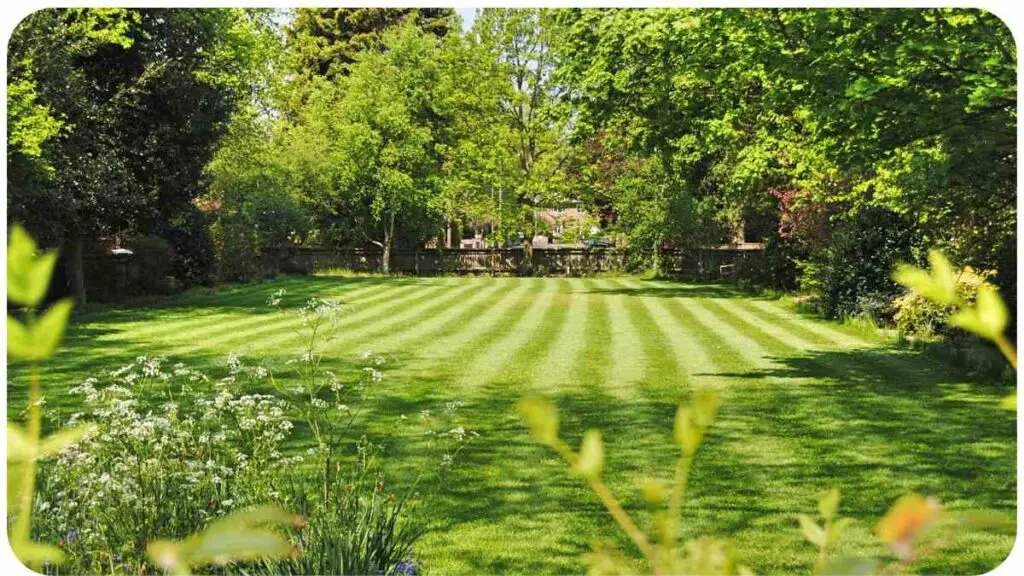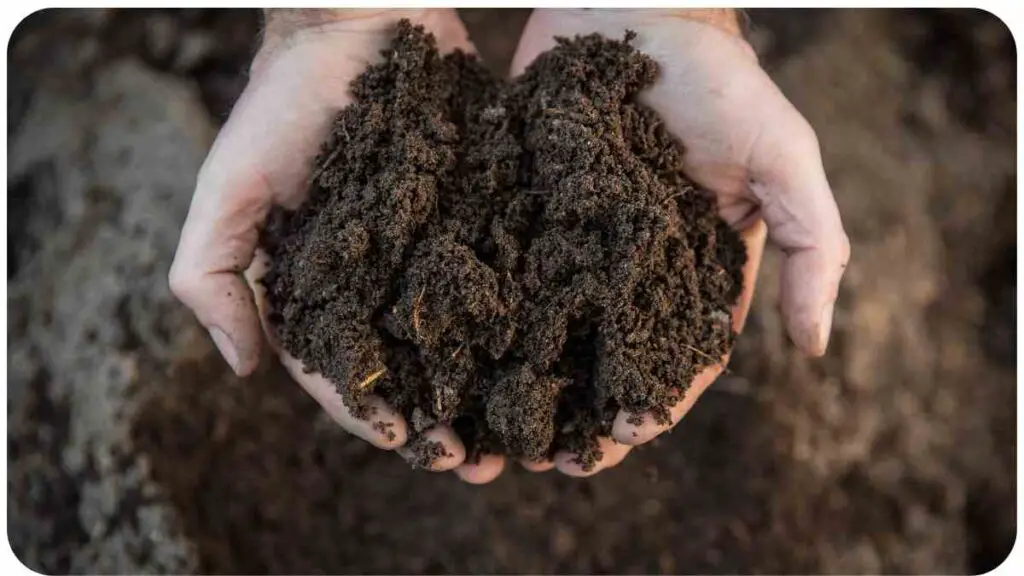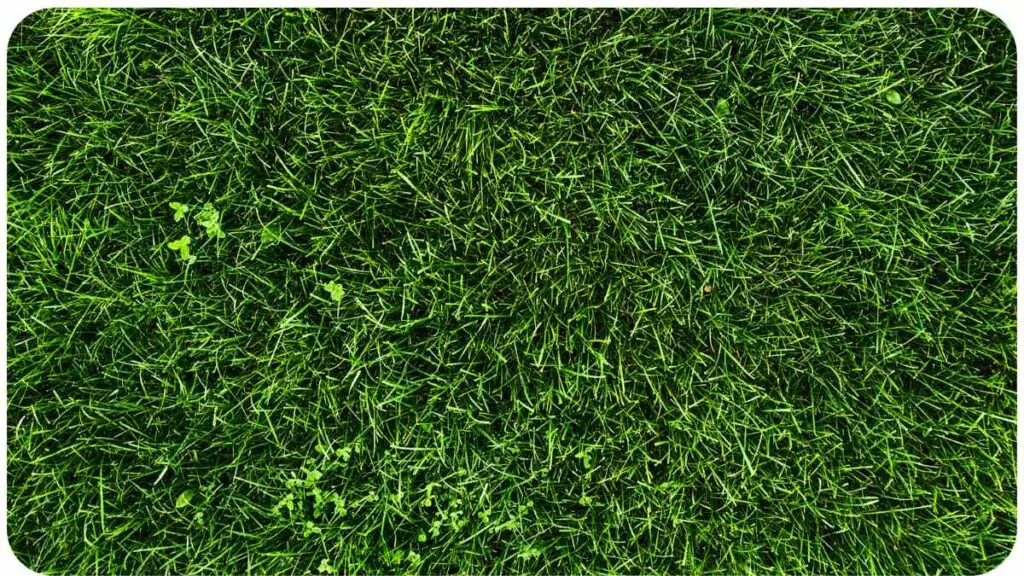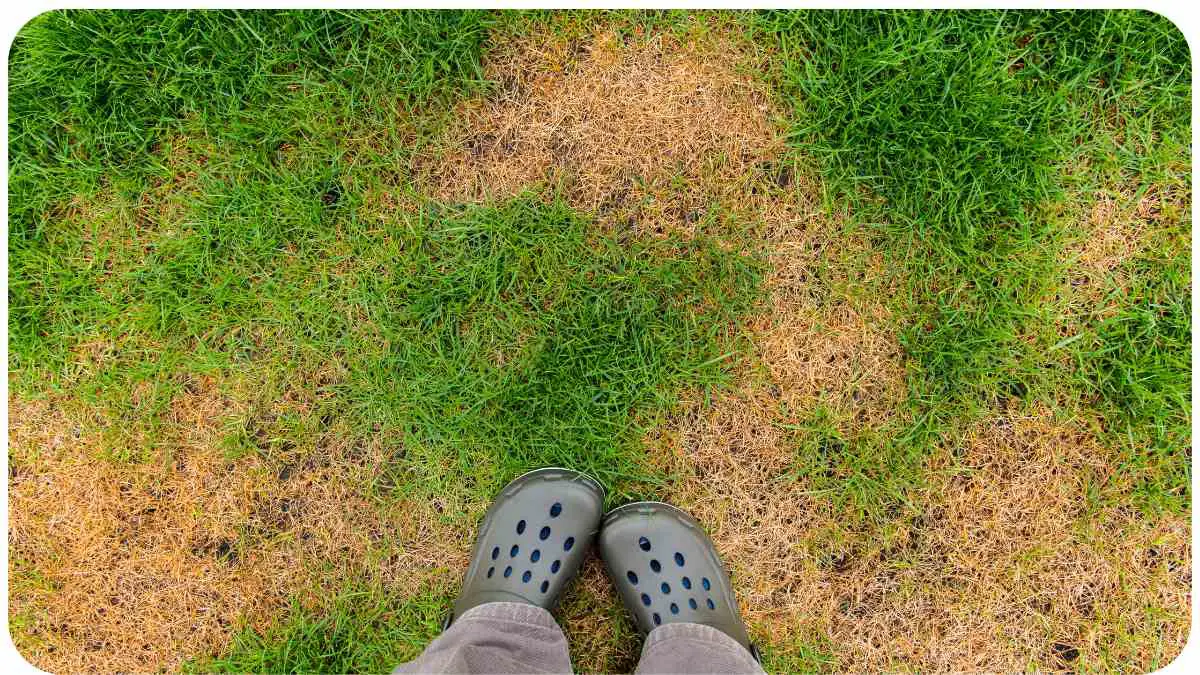Picture this: you step out onto your once-vibrant green lawn, only to be greeted by unsightly brown spots scattered across its surface. Don’t fret! As a seasoned lawn enthusiast and professional, I’ve encountered my fair share of brown patches, and I’m here to guide you through the journey of restoring your lawn’s lush beauty.
In this comprehensive guide, we’ll delve into the root causes of brown spots, explore effective remedies, and reveal insider tips that have yielded successful results.
Understanding Brown Spots on Your Lawn
Brown spots can be as puzzling as they are frustrating. To truly tackle the issue, we must first grasp why these spots appear.
Brown patches on your lawn are signals – they’re your lawn’s way of telling you that something isn’t quite right. Understanding these signals will empower you to take the necessary steps toward rejuvenation.
When fertilizing your lawn, ensure you follow precautions to keep your furry friends safe. To avoid potential harm, learn about fertilized grass safety for dogs. Taking preventive measures helps maintain a healthy lawn and happy pets.
Common Causes of Brown Spots

Lack of Water
Think of your lawn as a thirsty friend – it needs consistent hydration to thrive. One of the most common culprits behind brown spots is inadequate watering. But before you drown your lawn in water, let’s figure out the right balance.
Table: Signs of Underwatering vs. Overwatering
| Signs of Underwatering | Signs of Overwatering |
| Wilting, Crispy Grass | Mushy, Spongy Turf |
| Brown Patches | Fungus and Disease Risk |
| Slow Recovery | Fast Growth, Weak Roots |
| Footprints Remain | Footprints Remain |
Stay tuned for practical tips on how to water your lawn effectively without drowning it.
Improper Mowing
Mowing might seem straightforward, but it’s a science that requires finesse. Cutting your grass too short can stress it out, leaving brown spots in its wake. Let’s explore the delicate art of mowing.
Are you searching for effective alternatives to tackle stubborn weeds and unwanted grass? Discover reliable methods beyond traditional options like pesticides. Explore fast grass and weed elimination alternatives for a thriving, chemical-free garden
Table: Mowing Heights for Different Grass Types
| Grass Type | Ideal Mowing Height |
| Bermuda Grass | 0.5 to 1 inch |
| Kentucky Bluegrass | 2.5 to 3.5 inches |
| Zoysia Grass | 1 to 2 inches |
| Fescue Grass | 2 to 3 inches |
Discover how the right mowing technique can be a game-changer for your lawn’s health.
Lawn Diseases
Just like us, lawns can fall victim to diseases. Fungal infections can trigger those pesky brown patches. Don’t worry, we’ll walk through disease management strategies to help your lawn fight back.
Table: Common Lawn Diseases and Treatments
| Lawn Disease | Symptoms | Treatment |
| Brown Patch | Circular Patches, Brown Grass | Fungicide, Improved Airflow |
| Dollar Spot | Small Brown Spots, Silver Dollar-like Lesions | Fungicide, Balanced Nitrogen |
| Powdery Mildew | White Powdery Coating, Stunted Growth | Fungicide, Proper Spacing |
Unveil the secrets of nursing your lawn back to health using targeted treatments.
Soil Compaction
Imagine trying to breathe through a straw – that’s what compacted soil feels like for your grass roots. Compaction can prevent water, air, and nutrients from reaching where they’re needed. Let’s give your lawn some room to breathe.
Taking care of your lawn requires understanding the right techniques for self-fertilization. Learn essential steps to nourish your yard efficiently. Get insights on DIY lawn fertilization and maintain a lush, vibrant outdoor space
Table: Signs of Soil Compaction and Solutions
| Signs of Compaction | Remedies |
| Water Runoff | Core Aeration |
| Difficulty Penetrating Soil | Topdressing with Compost |
| Thatch Buildup | Soil Loosening with Tools |
Uncover the secrets of nurturing your soil for a thriving lawn.
Stay tuned as we continue the journey of transforming your brown-spotted lawn into a verdant masterpiece.
Identifying the Culprit: Examining Your Lawn
It’s time to play detective and unravel the mystery behind those brown spots. Examining your lawn closely will provide valuable insights into the root causes, allowing you to address them effectively.
Performing a Soil Test

Think of a soil test as a health checkup for your lawn. By analyzing the composition of your soil, you’ll gain crucial information about its pH levels and nutrient content. Armed with this knowledge, you can make informed decisions about fertilization and soil amendments.
Table: Soil Test Results and Recommendations
| pH Level | Nutrient Deficiencies | Recommended Amendments |
| Too Acidic (Below 6.0) | Lime Application | Balanced Fertilizer, Compost |
| Too Alkaline (Above 7.5) | Sulfur Application | Acidifying Fertilizer, Peat Moss |
Discover how a simple soil test can pave the way for a healthier lawn foundation.
Checking for Pest Infestations
Uninvited guests like grubs and insects can wreak havoc on your lawn, resulting in brown patches. Identifying and treating these infestations promptly is crucial to preventing further damage.
Garden pests can wreak havoc on your hard work. Don’t let them ruin your gardening experience. Discover effective strategies and tricks to manage pests. Arm yourself with garden pest management tips for a thriving and protected garden.
Table: Common Lawn Pests and Control Methods
| Common Pests | Signs of Infestation | Control Measures |
| White Grubs | Brown Patches, Wilting | Nematodes, Insecticides |
| Chinch Bugs | Yellowing Grass, Irregular Patches | Insecticidal Soap, Neem Oil |
| Armyworms | Chewed Leaves, Bare Spots | Bacillus Thuringiensis, Manual Removal |
Learn how to fend off these unwanted visitors and safeguard your lawn’s health.
Assessing Sunlight Exposure
Just like people, your lawn thrives with the right amount of sunlight. If some areas of your lawn are constantly in the shadows, brown spots can emerge due to lack of sunlight.
Table: Sunlight Requirements for Different Grass Types
| Grass Type | Sunlight Preference |
| Bermuda Grass | Full Sun (6+ hours) |
| Kentucky Bluegrass | Moderate Sun |
| Zoysia Grass | Full Sun |
| Fescue Grass | Shade Tolerant |
Explore strategies to optimize sunlight distribution and create a harmonious environment for your lawn.
The Road to Recovery: How to Fix Brown Spots
Now that we’ve uncovered the culprits behind those frustrating brown spots, it’s time to roll up our sleeves and embark on the journey of restoring your lawn’s beauty. With a combination of tailored strategies and a touch of expertise, you’ll be well on your way to a healthier, greener lawn.
Adjusting Watering Habits
Finding the sweet spot for watering your lawn is a delicate dance. Too little water leads to dry, brown patches, while overwatering can create a breeding ground for diseases. Let’s navigate this challenge together.
Table: Watering Tips for a Healthy Lawn
| Grass Type | Frequency | Best Time of Day |
| Bermuda Grass | 1 inch per week | Early Morning |
| Kentucky Bluegrass | 1 to 1.5 inches per week | Early Morning or Evening |
| Zoysia Grass | 1 inch per week | Early Morning or Evening |
| Fescue Grass | 1.5 to 2 inches per week | Early Morning or Evening |
Discover how to tailor your watering routine to your lawn’s specific needs.
Mowing Techniques and Height
Your lawnmower is more than just a machine – it’s an artist’s brush. Proper mowing techniques and height play a pivotal role in maintaining a vibrant lawn.
Table: Mowing Tips for a Luscious Lawn
| Grass Type | Ideal Mowing Height | Frequency |
| Bermuda Grass | 0.5 to 1 inch | Every 5-7 days |
| Kentucky Bluegrass | 2.5 to 3.5 inches | Every 7-10 days |
| Zoysia Grass | 1 to 2 inches | Every 7-10 days |
| Fescue Grass | 2 to 3 inches | Every 10-14 days |
Uncover the art of mowing for a lawn that’s both healthy and visually appealing.
Wilting plants can be disheartening, but there’s hope to bring them back to life. Understand common causes and implement solutions to rescue your plants. Explore a comprehensive guide to reviving wilting plants and nurture your garden with care
Implementing Disease Management
When dealing with lawn diseases, knowledge is your greatest weapon. A proactive approach involves recognizing the signs and addressing issues promptly.
Table: Disease Management Tips for a Disease-Free Lawn
| Preventive Measures | Early Signs of Diseases | Treatment Approach |
| Proper Aeration | Discolored Patches | Targeted Fungicide |
| Balanced Fertilization | Powdery Coating | Improve Air Circulation |
| Mowing High | Circular Patches | Adjust Watering Habits |
Discover how to detect and combat lawn diseases effectively.
Aeration and Soil Improvement
Think of aeration as a breath of fresh air for your lawn. By allowing water, nutrients, and oxygen to penetrate the soil, you’re creating an environment that fosters growth.
Table: Aeration and Soil Improvement Techniques
| Aeration Methods | Best Time for Aeration | Frequency |
| Core Aeration | Spring or Fall | Every 1-3 years |
| Liquid Aeration | Spring or Fall | Annually |
| Spike Aeration | Spring or Fall | Every 1-3 years |
Explore how aeration can be your lawn’s secret weapon against brown spots.
Nurturing a Resilient Lawn
Creating a lawn that can withstand the challenges of varying seasons and conditions is the ultimate goal. Let’s explore strategies to fortify your turf, ensuring it remains lush and vibrant year-round.
Choosing the Right Grass Species

The foundation of a healthy lawn begins with selecting the appropriate grass species for your region and climate. Different types of grass excel under specific conditions, so it’s essential to make an informed choice.
Table: Grass Species for Different Climates
| Climate | Recommended Grass Species |
| Warm and Humid | St. Augustine, Bermuda, Zoysia |
| Cool and Temperate | Kentucky Bluegrass, Fescue |
Discover the ideal grass species for your area and create a strong foundation for your lawn’s success.
Fertilization and Nutrient Balance
Feeding your lawn the right nutrients at the right time can make all the difference. A balanced fertilization regimen promotes healthy growth and prevents nutrient deficiencies.
Table: Fertilization Schedule for a Vibrant Lawn
| Season | Nutrient Requirements |
| Spring | Nitrogen-Rich Fertilizer |
| Summer | Slow-Release Fertilizer |
| Fall | Balanced Fertilizer |
Unlock the secret to maintaining a nutrient-rich soil for your lawn’s optimal growth.
Overcoming Weather Challenges
Weather can be both a friend and a foe to your lawn. Drought, excessive rain, and temperature extremes can impact your lawn’s health. It’s time to weatherproof your turf.
Table: Weatherproofing Strategies for Your Lawn
| Weather Challenge | Strategy |
| Drought | Deep and Infrequent Watering |
| Excessive Rain | Improve Drainage, Core Aeration |
| Heatwaves | Provide Shade, Increase Watering |
Learn how to shield your lawn from the unpredictable whims of the weather.
DIY vs. Professional Help: Making the Right Choice
When it comes to lawn care, the decision between DIY efforts and seeking professional assistance can be a tough one. Let’s weigh the pros and cons of each approach to help you make an informed choice.
DIY Lawn Care
Table: DIY Lawn Care Pros and Cons
| Pros | Cons |
| Cost-Effective | Requires Time and Effort |
| Personalized Care | Learning Curve |
| Sense of Accomplishment | Equipment Costs |
| Control over Methods | Limited Expertise |
Discover how to channel your inner green thumb and take pride in nurturing your lawn with your own hands.
Professional Lawn Care
Table: Professional Lawn Care Pros and Cons
| Pros | Cons |
| Expertise and Efficiency | Costly in the Long Run |
| Time-Saving | Limited Control over Methods |
| Professional Equipment | Scheduling Dependencies |
| Tailored Solutions | Trusting Outside Expertise |
Uncover the benefits of entrusting your lawn to skilled professionals who have mastered the art of lawn care.
Preventing Future Brown Spots
Now that you’ve invested time and effort into reviving your lawn, it’s essential to implement preventative measures to maintain its health and beauty. Let’s explore a proactive approach to ensure that those pesky brown spots don’t make a comeback.
Regular Maintenance Schedule
Consistency is key when it comes to maintaining a healthy lawn. Establishing a regular maintenance routine for mowing, watering, and fertilizing will help your lawn thrive.
Table: Lawn Maintenance Calendar
| Month | Tasks to Perform |
| Spring | Aeration, Fertilization |
| Summer | Mowing, Watering |
| Fall | Overseeding, Fertilization |
| Winter | Minimal Maintenance |
Learn how to create a well-rounded maintenance plan that caters to your lawn’s unique needs.
Proper Irrigation System
An efficient irrigation system can make a world of difference in your lawn’s health. Investing in smart technology or installing drip systems can help ensure your lawn receives the right amount of water.
Table: Types of Irrigation Systems
| Irrigation System | Pros |
| Sprinkler System | Wide Coverage, Convenient |
| Drip System | Water Efficiency, Targeted |
| Soaker Hoses | Prevents Water Waste, Easy Setup |
Explore the benefits of various irrigation methods and choose the one that suits your lawn best.
Being Mindful of Foot Traffic
Your lawn might be resilient, but constant foot traffic can lead to compacted soil and wear and tear. Designate pathways and high-traffic areas to protect your grass.
Table: Creating Lawn Pathways
| Material | Pros |
| Gravel | Drainage, Low Maintenance |
| Pavers | Durable, Aesthetic Appeal |
| Stepping Stones | Natural Look, Versatile |
Discover creative ways to guide foot traffic and maintain the health of your lawn.
Reviving Your Lawn: Success Stories
What better way to inspire and motivate than by sharing real-life success stories of individuals who faced brown spots head-on and emerged victorious. These tales of transformation prove that with dedication, knowledge, and a bit of elbow grease, you can turn your lawn into a lush oasis.
Rejuvenating a Neglected Lawn
Meet Sarah, a determined homeowner who inherited a neglected lawn with unsightly brown patches. Armed with the right information, she embarked on a journey of revitalization. Through consistent watering, proper mowing techniques, and targeted treatments for lawn diseases, Sarah’s lawn transformed into a carpet of lush greenery.
Table: Sarah’s Transformation Timeline
| Month | Activities and Results |
| Month 1 | Soil Testing and Aeration |
| Month 2 | Corrected Watering Schedule |
| Month 3 | Disease Management |
| Month 4 | Thickening and Overseeding |
| Month 5 | Vibrant, Healthy Lawn |
Discover how Sarah’s determination led to a lawn that became the talk of the neighborhood.
From Brown to Green: A Seasonal Transformation
Jason, an avid lawn enthusiast, faced the challenge of brown spots caused by extreme summer heat. By adjusting his watering habits, choosing a heat-resistant grass species, and implementing targeted fertilization, he managed to keep his lawn green and thriving throughout the hottest months.
Table: Jason’s Summer Lawn Care Regimen
| Month | Activities and Results |
| May | Fertilization and Seeding |
| June | Increased Watering |
| July | Heat-Tolerant Grass Choice |
| August | Frequent Mowing |
| September | Lush, Green Lawn |
Follow Jason’s lead to ensure your lawn remains resilient even in the face of scorching summer temperatures.
Further Reading
For more in-depth insights on tackling brown spots and achieving a thriving lawn, consider exploring the following resources:
- 8 Things Your Lawn Is Trying to Tell You: Uncover hidden messages your lawn might be sending you and gain a deeper understanding of its needs.
- What Causes Brown Spots in the Lawn: Delve into the science behind brown spots and learn effective strategies for prevention and recovery.
- What Causes Brown Spots in Lawns: This resource from This Old House offers practical tips and solutions for identifying and addressing the root causes of brown spots.
FAQs
Can brown spots be a sign of overwatering?
Yes, overwatering can lead to brown spots on your lawn. When soil becomes waterlogged, it suffocates the roots and encourages disease growth, resulting in patches of brown grass.
Is it possible for pets to cause brown patches?
Absolutely. The concentrated nitrogen in pet urine can burn the grass, leaving behind brown spots. To prevent this, consider diluting the area with water after your pet relieves itself.
How long does it usually take for brown spots to disappear?
The recovery time for brown spots depends on the underlying cause and the remedies applied. With proper care and attention, you might start to see improvements within a few weeks, but it can take longer for complete recovery.
Can I use home remedies to treat brown spots?
While there are some home remedies that can help address brown spots, it’s crucial to identify the exact cause first. Home remedies like applying a mixture of baking soda and water or using Epsom salt can work for specific issues, but professional advice might be necessary for more complex problems.
Can I use pesticides to get rid of brown spots?
Using pesticides should be a last resort and only if you’ve identified a pest infestation as the cause of brown spots. It’s essential to use pesticides properly and in accordance with the instructions to avoid harming your lawn and the environment.

Hi! My name is Hellen James, and I’m here to help you with your home-maintenance needs. Whether it’s building a better yard or just trying to fix a garden—I can show you how.


